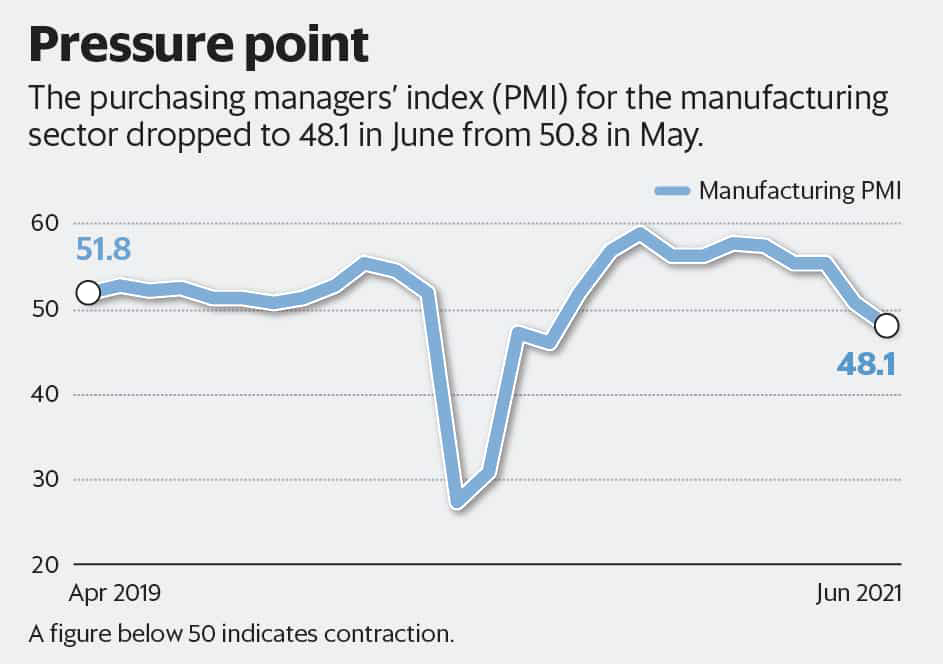Contraction of India's Manufacturing Sector: PMI | 02 Jul 2021
Why in News
The IHS Markit India Manufacturing Purchasing Managers’ Index (PMI) slipped to 48.1 in June from 50.8 in May, moving below the 50-level separating growth from contraction.
- India's manufacturing activity contracted in June for the first time in 11 months as the second wave of the Covid-19 pandemic and strict containment measures negatively impacted demand and led to renewed contractions in factory orders, production, exports and quantities of purchases.
Key Points
- PMI is a survey-based measure that asks the respondents about changes in their perception about key business variables as compared with the previous month.
- The purpose of the PMI is to provide information about current and future business conditions to company decision makers, analysts, and investors.
- It is calculated separately for the manufacturing and services sectors and then a composite index is also constructed.
- The PMI is a number from 0 to 100.
- A print above 50 means expansion, while a score below that denotes contraction.
- A reading at 50 indicates no change.
- If the PMI of the previous month is higher than the PMI of the current month, it represents that the economy is contracting.
- It is usually released at the start of every month. It is, therefore, considered a good leading indicator of economic activity.
- PMI is compiled by IHS Markit for more than 40 economies worldwide.
- IHS Markit is a global leader in information, analytics and solutions for the major industries and markets that drive economies worldwide.
- As the official data on industrial output, manufacturing and Gross Domesr\tic Product (GDP) growth comes much later, PMI helps to make informed decisions at an earlier stage.
- It is different from the Index of Industrial Production (IIP), which also gauges the level of activity in the economy.
- IIP covers the broader industrial sector compared to PMI.
- However, PMI is more dynamic compared to a standard industrial production index.

